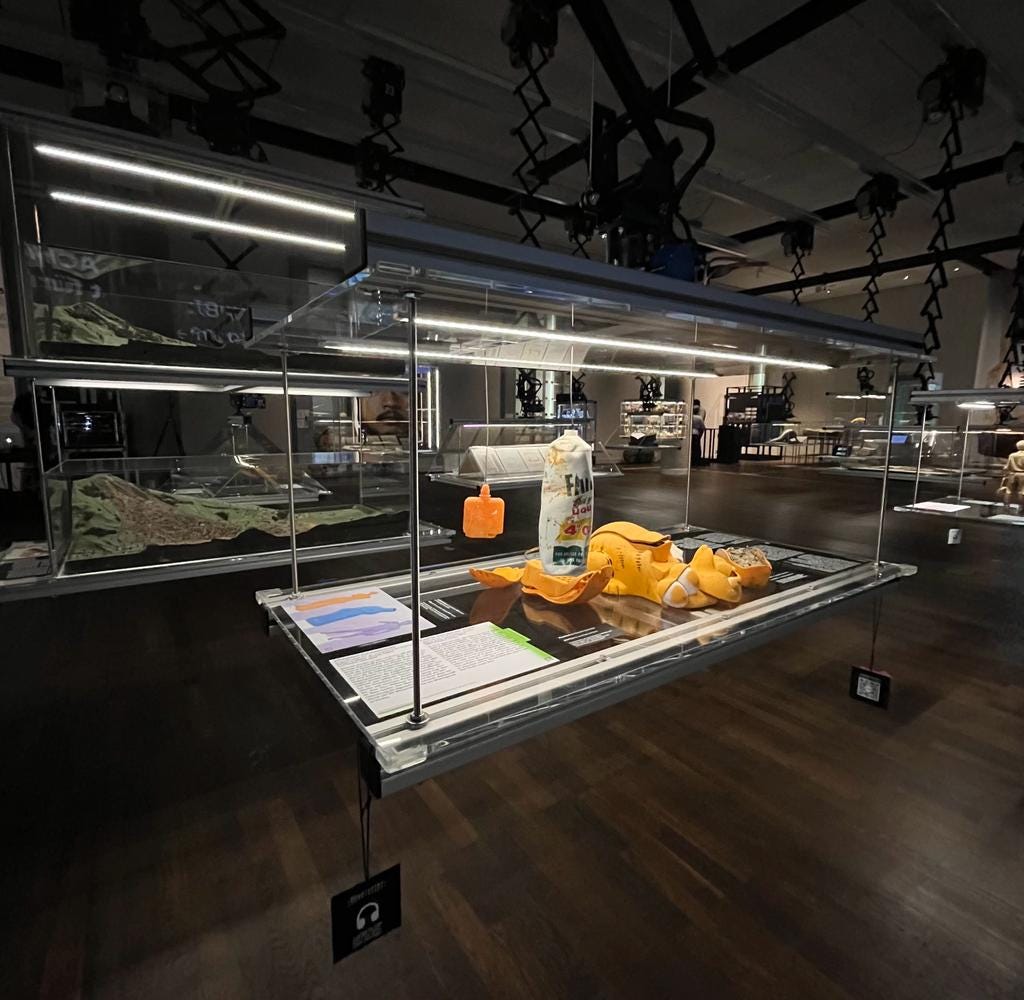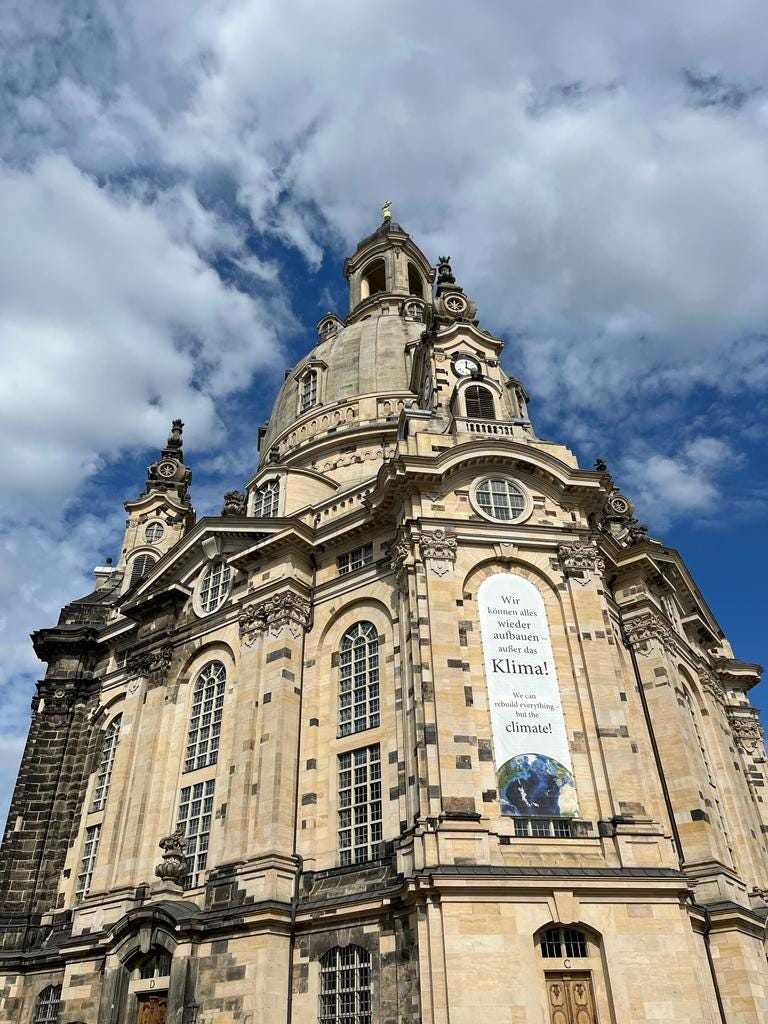After Nature at the Humboldt Forum
Exhibition overview and some thoughts on Berlin and Dresden, Germany
You know when you're on a trip and there are certain songs that can’t get out of your head and eventually become the themes that sum it up? Well, for me it was these two: First we take Manhattan by Leonard Cohen and Conscious Club by Vulfpeck. I invite you to listen to them while reading this edition of the newsletter.
I handed in my master's thesis. Wohoo! To celebrate this occasion, I decided to travel to Germany for a week and visit my dear friends who live in Dresden and Berlin. I want to share with you some notes and thoughts on environmental sustainability that have come up this week, specifically about Berlin, as I visited an exhibition in Humboldt Forum called After Nature.
After Nature
Humboldt Forum
The Humboldt Forum, an astonishing building, is located on Museumsinsel (Museum Island) and, by crossing its arches, you enter a large open-air hall. After Nature is a free and permanent exhibition that opens the Humboldt Lab.
The premise of the exhibition is to explore the complex ecological and political connections that constantly pose new questions about the relationship between humanity and nature. Starting from a dense investigation - and through various objects, archives, virtual reality and audiovisual formats - it points out that the fundamental questions of social and ecological coexistence can only be considered together.
At first, the exhibition can be confusing. There is a lot of important information and several technological stimuli that can make the experience a somewhat overwhelming one. However, four different routes are offered - Think Sustainability, Power/Critique, Freedom & Bureaucracy and The Gender of Science - which make the experience simpler and more engaging. Let’s take the Think Sustainability tour.
This route takes us through some items that, hanging around the large room in glass boxes, tell stories about the global and individual consequences of climate change. One of the items featured is a pangolin and it states on the exhibition label that all eight species of pangolin are endangered and yet they are the most hunted animals in the world. These animals have been around for 40 million years and are estimated to become extinct in 20 years.
There is also a box dedicated to climate refugees. The story is told through shoes found in the Sonoran Desert, a space where hundreds of illegal migrants leave their belongings. The material symbolizes the importance of the paths and circumstances of migration, forming almost an "archeology of the present". Climate change is a major cause of migration, and it is estimated that by 2050 there will be 200 million environmental refugees.
Another part of the exhibition featured a more interactive approach with visitors. One of the proposals, through a table with a map of the city of Berlin, invites the public to help in a project investigating the risks of climate change for water: “Which impacts of climate change are you observing on water in Berlin-Bradenburg, and what do you think should be done about it?”. The visitor writes his or her opinion on a piece of paper and pins it on the city map.
I love the interactive part of exhibitions, I find their presence in cultural institutions essential. After Nature is a challenging exhibition, yet full of interesting information, with a clever use of technology and definitely worth a visit.
A message from Dresden
The Frauenkirche, a lutheran church in Dresden, was destroyed by allied bombing at the end of the Second World War. After German reunification, the church was rebuilt over the course of more than a decade. Back in its splendour, it leaves an important message on a banner displayed on the façade: "We can rebuild anything - but the climate!”.
Before we go, I want to share a few things that I loved about these two cities. The streets are very clean and there is almost no noise in them. I think this is mostly due to two situations. First, because cities cut down on plastic in an interesting way, it is called the Pfand system: in a bar, when you order a drink, you are served a glass bottle, which can be given back to the establishment or delivered to supermarkets that pay for them. Secondly, there are almost no cars on the streets, as the main way to get around the city is by public transport or bicycle. Finding vegan and vegetarian food is very easy and there are also plenty of green spaces, and the need for people to be in touch with nature is noticeable and inspiring.







Congrats on finishing your thesis, a huge accomplishment! Love this style of sharing your experiences as notes. Great piece!